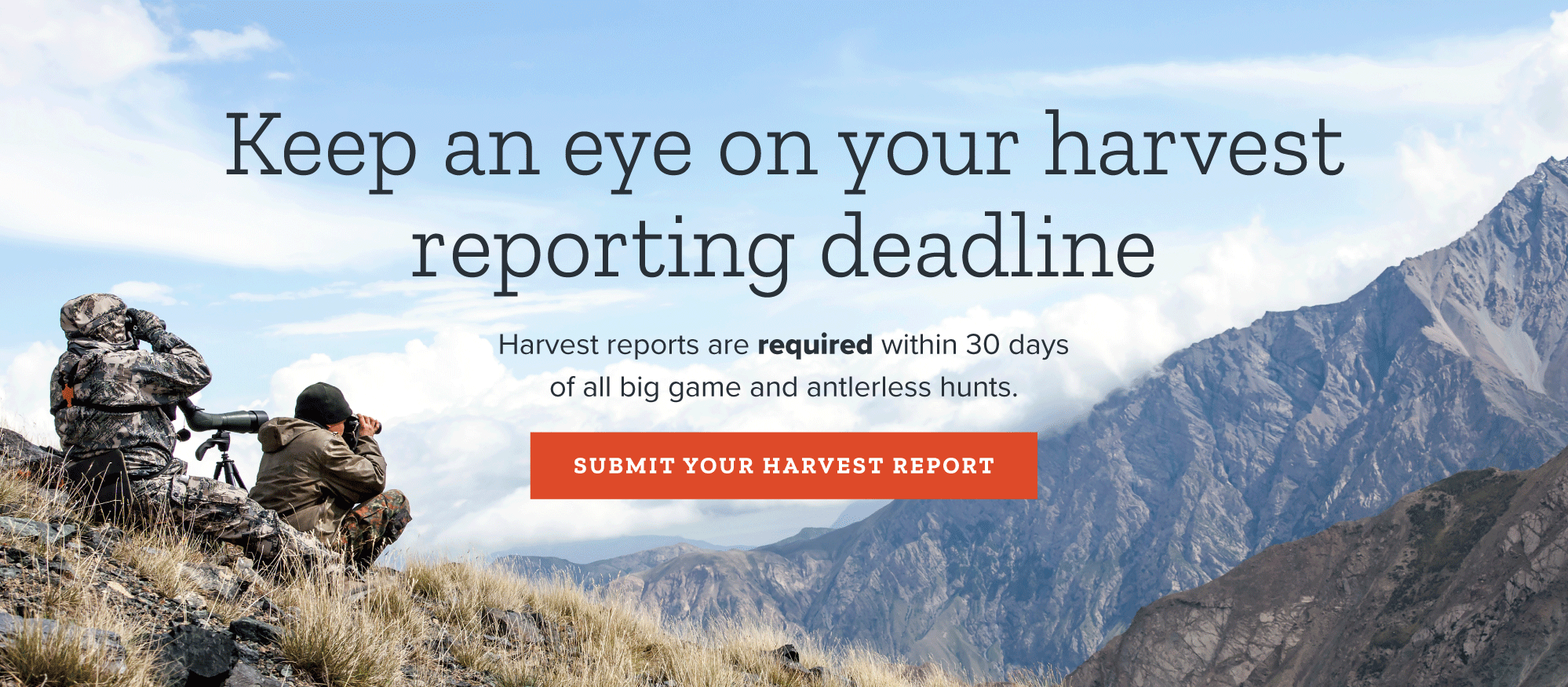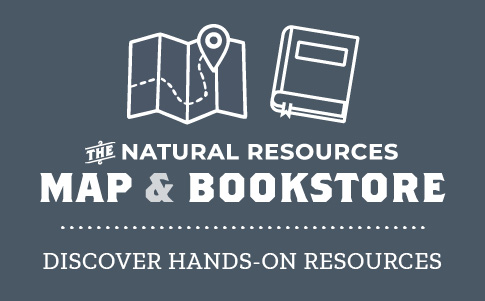Administrative rule R657-55a
Wildlife Expo Permits
Scroll to bottom of page to view a menu of all administrative rules
KEY: wildlife, wildlife permits
Date of Last Change: July 8, 2025
Notice of Continuation: New Rule
Authorizing, and Implemented or Interpreted Law: 23A-2-304; 23A-2-305
R657-55a-1. Purpose and Authority.
(1) Under the authority of Sections 23A-2-304 and 23A-2-305, this rule provides the standards and requirements for issuing wildlife expo permits after January 1, 2027.
(2) Wildlife expo permits are authorized by the Wildlife Board and issued by the division to a qualified conservation organization for purposes of generating revenue to fund wildlife conservation activities in Utah and attracting and supporting a regional or national wildlife exposition in Utah.
(3) The selected conservation organization will conduct a random drawing at an exposition held in Utah to distribute the opportunity to receive wildlife expo permits.
(4) This rule is intended as authorization to issue one series of wildlife expo permits per year to a qualified conservation organization.
R657-55a-2. Definitions.
(1) Terms used in this rule are defined in Section 23A-1-101.
(2) In addition:
(a) "Conservation organization" means a 26 U.S.C. 501(c)(3) tax exempt, nonprofit chartered institution, corporation, foundation, or association founded for promoting wildlife conservation.
(b) "Wildlife exposition" means a multi-day event held within Utah that is sponsored by one or more wildlife conservation organizations, acting through a single conservation organization, as their national or regional convention or event that is open to the general public and designed to draw nationwide attendance of more than 10,000 individuals. The wildlife exposition may include wildlife conservation fund raising activities, outdoor exhibits, retail marketing of outdoor products and services, public awareness programs, and other similar activities.
(c) "Wildlife exposition audit" means an annual review by the division of the conservation organization's processes used to handle applications for expo permits and conduct the drawing, the protocols associated with collecting and using client data, the revenue generated from expo permit application handling fees, and the expenditure of designated expo permit application handling fee revenue on division-approved projects.
(d) "Wildlife expo permit" means a permit which:
(i) is authorized by the Wildlife Board to be issued to successful applicants through a drawing or random selection process conducted at a Utah wildlife exposition; and
(ii) allows the permittee to hunt the designated species on the designated unit during the respective season for each species as authorized by the Wildlife Board.
(e) "Wildlife expo permit series" means a single package of permits to be determined by the Wildlife Board for:
(i) deer;
(ii) elk;
(iii) pronghorn;
(iv) moose;
(v) bison;
(vi) mountain goat;
(vii) desert bighorn sheep;
(viii) rocky mountain bighorn sheep;
(ix) wild turkey;
(x) cougar;
(xi) black bear; or
(xii) swan.
(f) "Secured opportunity" means the opportunity to receive a specified wildlife expo permit that is secured by an eligible applicant through the exposition drawing process.
(g) "Successful applicant" means an individual selected to receive a wildlife expo permit through the drawing process.
R657-55a-3. Wildlife Expo Permit Allocation.
(1) The Wildlife Board may allocate wildlife expo permits after May 1 of the year preceding the wildlife exposition.
(2) Wildlife expo permits shall be issued as a single series to one conservation organization.
(3) The number of wildlife expo permits authorized by the Wildlife Board shall be based on:
(a) the species population trend, size, distribution and long-term health; and
(b) the hunting and viewing opportunity for the general public, both short and long term.
(4) Wildlife expo permits may not exceed 200 total permits.
(5) Wildlife expo permits shall be approved by the Wildlife Board in a separate process from approving the number of public drawing permits.
R657-55a-4. Obtaining Authority to Distribute Wildlife Expo Permit Series.
(1)(a) Except as provided in Subsection (b), the wildlife expo permit series is issued for a period of five years.
(b) The original five-year term may be renewed for an additional period not to exceed five years, provided:
(i) the conservation organization, Division of Purchasing and General Services procurement officer, Wildlife Board, and division mutually agree in writing to the renewal term; and
(ii) the procurement officer determines in writing pursuant to Subsection 63G-6a-1204(7) that the renewal term is in the division's best interest and places the writing in the conservation organization's procurement file.
(2)(a) The wildlife expo permit series is available to eligible conservation organizations for distribution through a drawing or other random selection process held at a wildlife exposition in Utah open to the public.
(b) The division may unilaterally discontinue or suspend issuing the wildlife expo permit series at:
(i) the conclusion of the original five-year contract term or renewal term described in Subsection (1) and before issuance of a contract under this rule; or
(ii) any time during the term of a contract when in the interest of wildlife conservation, management, or compliance with law.
(3) Before expiration of a current wildlife exposition term or renewal term, the division may issue through the Division of Purchasing and General Services a request for proposal consistent with Title 63G, Chapter 6a, the Utah Procurement Code, to solicit bids from conservation organizations desiring to distribute the wildlife expo permit series at a wildlife exposition.
(4) The request for proposal will solicit information relevant to successfully conducting a wildlife exposition, competently distributing the expo permit series, protecting confidential personal information acquired in distributing permits, and generating revenue for wildlife conservation in Utah, including:
(a) the name, address and telephone number of the conservation organization;
(b) a description of the conservation organization's mission statement;
(c) documentation establishing the conservation organization meets the definitional criteria in Subsection R657-55a-2(2)(a) and is eligible to submit a proposal;
(d) the name of the president or other individual responsible for the administrative operations of the conservation organization;
(e) a detailed business plan describing how the:
(i) proposed wildlife exposition will take place;
(ii) proposed wildlife exposition will satisfy the definitional criteria in Subsection R657-55a-2(2)(c);
(iii) wildlife expo permit drawing procedures will be carried out; and
(iv) confidential personal information acquired in the drawing process will be safeguarded;
(f) the conservation organization and any partnering entities' ability, including past performance in marketing conservation permits under Rule R657-41, to effectively plan and complete the wildlife exposition;
(g) the conservation organization's commitment to use expo permit handling fee revenue to benefit protected wildlife in Utah; and
(h) historical contributions of the conservation organization and any partnering entities to the conservation of wildlife in Utah.
(i) The Wildlife Board may grant a variance to Subsection (4)(e)(i) and allow an electronic option, if:
(i) exigent, unforeseen circumstances prevent the conservation organization from completing its proposal for how the wildlife exposition will take place; and
(ii) the conservation organization and division both recommend the variance.
(5) Proposals submitted in response to a request for proposal under Subsection (4) will be processed, evaluated, and acted upon consistent with the procurement requirements set forth in Title 63G, Chapter 6a, the Utah Procurement Code.
(6) The conservation organization receiving the wildlife expo permit series must:
(a) require each wildlife expo permit applicant to possess a current Utah hunting or combination license before applying for a wildlife expo permit;
(b) select successful applicants for wildlife expo permits by drawing or other random selection process in accordance with law, this rule, and orders of the Wildlife Board;
(c) allow applicants to apply for wildlife expo permits without purchasing admission to the wildlife exposition;
(d) notify the division of the successful applicant of each wildlife expo permit within 10 days of the applicant's selection;
(e) maintain records demonstrating that the drawing was conducted fairly; and
(f) submit to an annual wildlife exposition audit by a division appointed auditor.
(7) The division shall issue the appropriate wildlife expo permit to the designated successful applicant after:
(a) completion of the random selection process;
(b) verification of the recipient being eligible for the permit; and
(c) payment of the appropriate permit fee is received by the division.
(8) The division and the conservation organization receiving the wildlife expo permit series will enter into a contract with terms that include the relevant provisions in this rule, the request for proposal, and the conservation organization's proposal.
(9) If the conservation organization awarded the wildlife expo permit series withdraws before the end of the 5-year period or any extension period under Subsection R657-55a-4(1)(b), any remaining co-participant with the conservation organization may assume the contract and distribute the expo permit series consistent with the contract and this rule for the remaining years in the applicable period, provided:
(a) The original contracted conservation organization submits a certified letter to the head of the procurement unit, as defined in Section 63G-6a-103, and the division identifying that it will no longer be participating in the exposition;
(b) The co-participant conservation organization submits a request with the head of the procurement unit and the division for authorization to assume the remaining term of the contract; and
(c) the head of the procurement unit, in consultation with the division and Wildlife Board, approves the application.
(10) The division may suspend or terminate the conservation organization's authority to distribute wildlife expo permits at any time during the original five-year award term or any renewal period for:
(a) violating any of the requirements set forth in this rule or the contract; or
(b) failing to bring or organize a wildlife exposition in Utah, as described in the business plan under Subsection R657-55a-4(4)(e), in any given year.
R657-55a-5. Wildlife Expo Permit Application Procedures.
(1) Any person legally eligible to hunt in Utah may apply for a wildlife expo permit.
(2) The handling fee assessed by the conservation organization to process applications shall be no less than $5 and no more than $10 per application submitted.
(3)(a) Except as provided in Subsection (3)(b), an applicant must validate their application in person at the wildlife exposition to be eligible to participate in the wildlife expo permit drawing.
(i) No person may submit an application on behalf of another.
(ii) A person may validate their wildlife expo permit application at the exposition without having to enter the exposition and pay the admission charge.
(b) An applicant that is a member of the United States Armed Forces and unable to attend the wildlife exposition as a result of being deployed or mobilized in the interest of national defense or a national emergency is not required to validate their application in person; provided exposition administrators are furnished a copy of the written deployment or mobilization orders and the orders identify:
(i) the branch of the United States Armed forces from which the applicant is deployed or mobilized;
(ii) the location where the applicant is deployed or mobilized;
(iii) the date the applicant shall report to duty; and
(iv) the nature and length of the applicant's deployment or mobilization.
(c) The conservation organization shall maintain a record, including copies of military orders, of each applicant not required to validate their applications in person pursuant to Subsection (3)(b), and submit to a division audit of these records as part of its annual audit under Subsection R657-55a-4(6)(f) when requested by the division.
(4) An applicant may apply for each individual hunt for which they are eligible.
(5) An applicant may apply only once for each hunt, regardless of the number of permits for that hunt.
(6) An applicant must submit an application for each desired hunt.
(7) An applicant must possess a current Utah hunting or combination license to apply for a wildlife expo permit.
(8) The conservation organization shall advertise, accept, and process applications for wildlife expo permits and conduct the drawing in compliance with this rule and other applicable laws.
R657-55a-6. Drawing Procedures.
(1) A random drawing or selection process must be conducted for each wildlife expo permit.
(2) Preference and bonus points are neither awarded nor applied in the drawings.
(3) Waiting periods do not apply, except any person who obtains a wildlife expo permit for a once-in-a-lifetime species is subject to the once-in-a-lifetime restrictions applicable to obtaining a subsequent permit for the same species through a division application and drawing process, as provided in Rule R657-62 and the guide books of the Wildlife Board for taking big game.
(4) No predetermined quotas or restrictions shall be imposed in the application or selection process for wildlife expo permits between resident and nonresident applicants.
(5) Drawings will be conducted within five days of the close of the exposition.
(6) Applicants do not have to be present at the drawing to be awarded a wildlife expo permit.
(7) The conservation organization shall identify all eligible alternates for each wildlife expo permit and provide the division with a finalized list. This list will be maintained by the conservation organization until all permits are issued.
(8) The division shall contact successful applicants, and the conservation organization shall post the name of all successful applicants on a designated website.
R657-55a-7. Issuance of Permits.
(1) The division shall provide a wildlife expo permit to the successful applicant, as designated by the conservation organization.
(2) The division must provide a wildlife expo permit to each successful applicant, except as otherwise provided in this rule.
(3) The division shall provide each successful applicant a letter indicating the permit secured in the drawing, the appropriate fee owed the division, and the date the fee is due.
(4)(a) Successful applicants must submit the permit fee payment in full to the division before receiving the permit.
(b) Subject to the limitation in Subsection (8), the division will issue the designated wildlife expo permit to the successful applicant.
(5) Residents will pay resident permit fees and nonresidents will pay nonresident permit fees.
(6) Applicants are eligible to obtain only one expo permit each year, regardless of species.
(7) If an applicant is selected for more than one expo permit, the division will contact the applicant to determine which permit the applicant selects.
(a) The applicant must select the permit of choice within 2 days of receiving notification.
(b) If the division cannot contact the applicant within 2 days, the division will issue to the applicant the permit with the most difficult drawing odds based on drawing results from the preceding year.
(c) Permits not issued to the applicant will go to the next person on the alternate drawing list for that permit, provided the person is legally eligible to receive the permit and does not have a secured opportunity for any other expo permit.
(8) Any successful applicant who fails to satisfy the following requirements will be ineligible to receive the wildlife expo permit and the next drawing alternate for that permit will be selected if:
(a) The applicant fails to remit the appropriate permit fee in full to the division by the date provided in Subsection (3);
(b) The applicant does not possess a valid Utah hunting or combination license when the expo permit application was submitted; or
(c) The applicant is legally ineligible to possess the permit.
R657-55a-8. Surrender or Transfer of Wildlife Expo Permits.
(1)(a) A person selected to receive a wildlife expo permit that is also successful in obtaining a Utah once-in-a-lifetime or limited entry permit for the same species in the same year or successful in obtaining a general permit for a male animal of the same species in the same year, may not possess both permits and must select the permit of choice.
(b) In the event a secured opportunity is surrendered before the permit is issued, the next eligible applicant on the alternate drawing list for that permit will be selected to receive the permit, provided the person is legally eligible to receive the permit and does not:
(i) have a secured opportunity for any other expo permit; or
(ii) possess any other expo permit valid in the same year.
(c) In the event the wildlife expo permit is surrendered, the next eligible applicant on the alternate drawing list for that permit will be selected to receive it, provided the person satisfies the eligibility requirements in Subsection (b).
(d) The permit fee on a surrendered expo permit may be refunded, as provided in Sections 23A-4-207, 23A-4-301 and R657-42-5.
(2) A person selected by a conservation organization to receive a wildlife expo permit, may not sell or transfer the permit, or any rights thereunder to another person in accordance with Section 23A-4-201.
(3) If a person is successful in obtaining a wildlife expo permit but is legally ineligible to hunt in Utah, the next eligible applicant on the alternate drawing list for that permit will be selected to receive it, provided the person satisfies the eligibility requirements in Subsection (1)(b).
R657-55a-9. Using a Wildlife Expo Permit.
(1) A wildlife expo permit allows the recipient to:
(a) take only the species and sex printed on the permit;
(b) take the species only in the area and during the season specified on the permit; and
(c) take the species only with the weapon type specified on the permit.
(2) The recipient of a wildlife expo permit is subject to Title 23A, the Wildlife Resources Act, and the rules and guidebooks of the Wildlife Board for taking and pursuing wildlife.
R657-55a-10. Wildlife Expo Permit — Application Handling Fee Revenue.
(1)(a) All wildlife expo permit application handling fee revenue generated by the conservation organization under Subsection R657-55a-5(2) and Subsections (3) and (4) shall be deposited in separate federally insured accounts to prevent commingling with any other funds.
(b) Interest earned on the portion of application handling fee revenue committed to fund wildlife conservation projects under Subsection (3) shall be used by the conservation organization to fund approved wildlife conservation projects.
(c) Interest earned on the portion of application handling fee revenue committed to advance wildlife interests in the state under Subsection (4) shall also be used by the conservation organization to advance wildlife interests in the state.
(2) The conservation organization may retain up to 20% of the aggregate application handling fee revenue for administrative expenses, unless the conservation organization pledges a greater percentage of the application handling fee to wildlife conservation in:
(a) its response to the request for proposal; or
(b) the expo contract with the division.
(3) The conservation organization may retain up to 35% of the aggregate application handling fee revenue and accrued interest to be used by the conservation organization to fund projects advancing wildlife interests in the state, subject to the following:
(a) project funding will not be committed to or expended on any project without first obtaining the division director's written approval;
(b) cash donations to the Wildlife Habitat Account created under Section 23A-3-207 or Division Species Enhancement Funds are authorized for projects that do not require the director's approval; and
(c) application handling fee revenue dedicated to funding projects must be completely expended on approved projects or transferred to the division by August 1st, two years following the year in which the application handling fee revenue is collected.
(4) The conservation organization may retain 35% of the aggregate application handling fee revenue and accrued interest to be used by the organization to advance wildlife interests in the state.
(a) This fund may be spent by the group, to advance wildlife interests in Utah, without the pre-approval from the director.
(5) The conservation organization shall remit 10% of the aggregate application handling fee revenue to the division within 60 days of the expo permit drawing.
(6) Application handling fee revenue committed to division-approved projects will be transferred by the conservation organization to the division within 60 days of being invoiced by the division. If the division-approved project to which funds are committed is completed under projected budget or canceled, funds committed to the project that are not used will be kept by the division and credited back to the conservation organization to be made available for the group to use on other approved projects during the current or subsequent year.
(7) All records and receipts for projects under Subsections (3) and (4) must be retained by the conservation organization for a period not less than five years, and shall be produced to the division for inspection upon request.
(8) The conservation organization shall submit a report to the division annually by August 1st. The report must account for and document the following:
(a) gross revenue generated from collecting wildlife expo permit application handling fees;
(b) total amount of application handling fee revenue retained for administrative expenses;
(c) total amount of application handling fee revenue set aside and dedicated to funding projects, including bank statements showing account balances; and
(d) records, receipts and details for all expenditures from Subsections (3) and (4).
(9) A partner organization that individually receives application handling fee revenue from the expo permit drawing pursuant to a co-participant contract with the conservation organization, is subject to the provisions in Subsections (1) through (8).

















